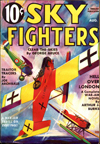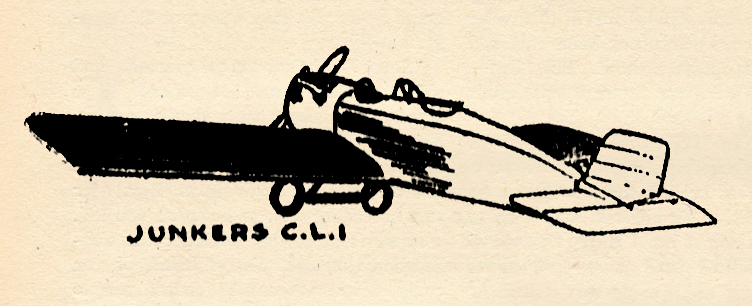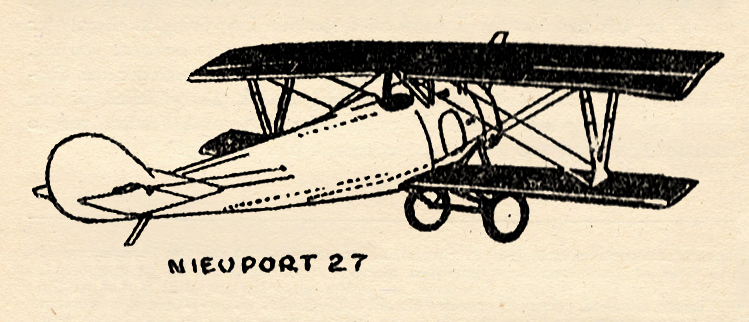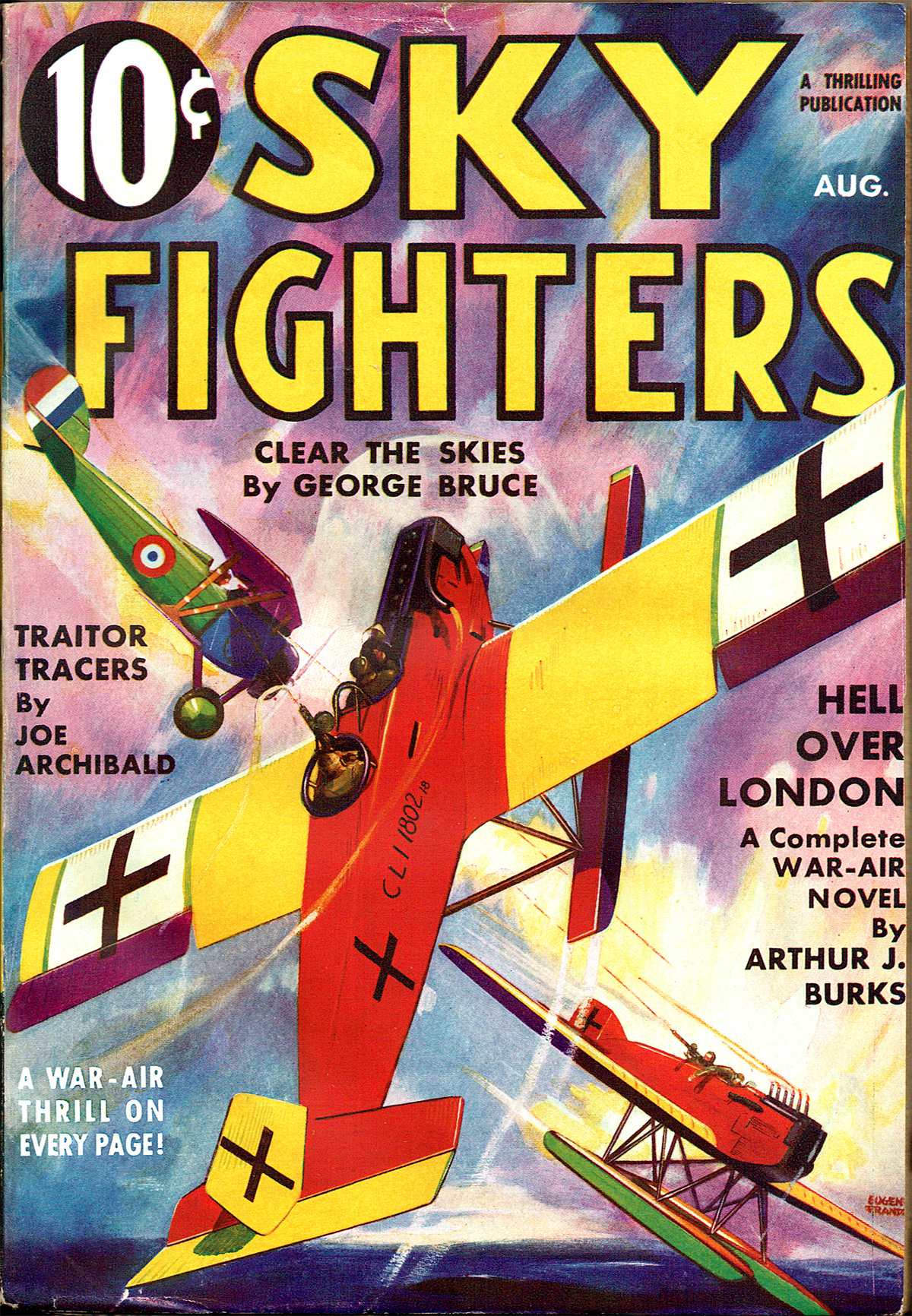“Sky Fighters, August 1935″ by Eugene M. Frandzen
Eugene M. Frandzen painted the covers of Sky Fighters from its first issue in 1932 until he moved on from the pulps in 1939. At this point in the run, the covers were about the planes featured on the cover more than the story depicted. For the August 1935 cover, Mr. Frandzen features the a couple of Junkers C.L.1 Seaplanes taking on a Neieuport 27!
The Ships on the Cover
ALL metal low-wing monoplanes  are not a new wrinkle in sky ships. Back in the World War days, Professor Hugo Junkers sat before a drafting table littered with plains, blueprints and bits of corrugated metal. His simple stream-lined designs were far ahead of his day, therefore they were scoffed at by the heads of the German Flying Corps.
are not a new wrinkle in sky ships. Back in the World War days, Professor Hugo Junkers sat before a drafting table littered with plains, blueprints and bits of corrugated metal. His simple stream-lined designs were far ahead of his day, therefore they were scoffed at by the heads of the German Flying Corps.
Anthony Fokker had a welded steel frame in the fuselage of his planes at the time. But this welding job was an exception. Fokker liked the looks of the Junkers design and saw to it that certain strings were pulled along the political line and it came to pass that those who had turned down the Junkers all metal planes swung into a snappy about-face in their beliefs. Fokker linked his name definitely with Hugo Junker’s. If those shiny metal jobs load been adequately powered with engines which were not too heavy, they would have revolutionized airplane design.
Finest of ‘em All
The C.L.1 All Metal monoplane in the foreground on the cover, powered by a Mercedes engine, was probably the finest ship turned out by Junkers in 1918. The wings had considerable dihedral and were very thick at the leading edge. Junkers who was an authority on Diesel engines which his firm manufactured, insisted that the Mercedes engine be used in his planes. Car type radiators were used in the nose. Ailerons on most of the Junkers craft were balanced, similar to the Fokker D7. But on this particular version of the C.L.1 they were unbalanced as was the elevator. The rudder was anchored by a single post which in rotating swung it to left or right. Corrugated aluminum was used throughout, which did not by any means make the ship bullet proof but it did minimize the fire hazard and give added strength to the ship that allowed inner structural bracing to be lightened.

Professor Junkers, who died only a few months ago at the age of seventy-six, predicted when he made his first all metal airplane that some day planes would be armor-plated. But with heavy motors developing less than 300 h.p., he was limited to aluminum which is about one-third the weight of steel. Had he been able to armor plate the Junkers planes, a different story could be told of the cover picture.
Zeebrugge, the submarine lair of the German navy, was bottled up by the British navy on April 23, 1918, by sinking ships filled with concrete across the mouth of the harbor.
Blazing Red Skies
A lone French Nieuport roared along the coast toward the heavily fortified submarine basin. A final observation from the air was necessary to the British. Two shining German Junkers seaplanes skidded off the water and flashed into the skies. The Nieuport looked like a butterfly attacked by two bats. But the thundering Vickers guns in the French plane’s nose blasted a rain of slugs through the thin-gauge aluminum of the Junkers into a vital spot. One down! The back gunner on the foremost Junkers blazed at the Nieuport. The tiny French ship flipped under the German plane. One volley sent it reeling towards the sea. The Nieuport circled twice over Zeebrugge, streaked for home.

A telegraph key clattered in a British seaport. An admiral smiled grimly as he read the dispatch from the French pilot.
That night the skies blazed red above Zeebrugge in the most spectacular naval-land battle of the whole war. The engagement mounted to an unbelievable pitch, then slowly died out as the British ships, battered, decks blasted away and superstructure listing, limped into the darkness toward home.
A terse message flashed through the ether from the Admiral’s flagship to British headquarters: “Mission accomplished satisfactorily.”

Sky Fighters, August 1935 by Eugene M. Frandzen
(The Ships on The Cover Page)




